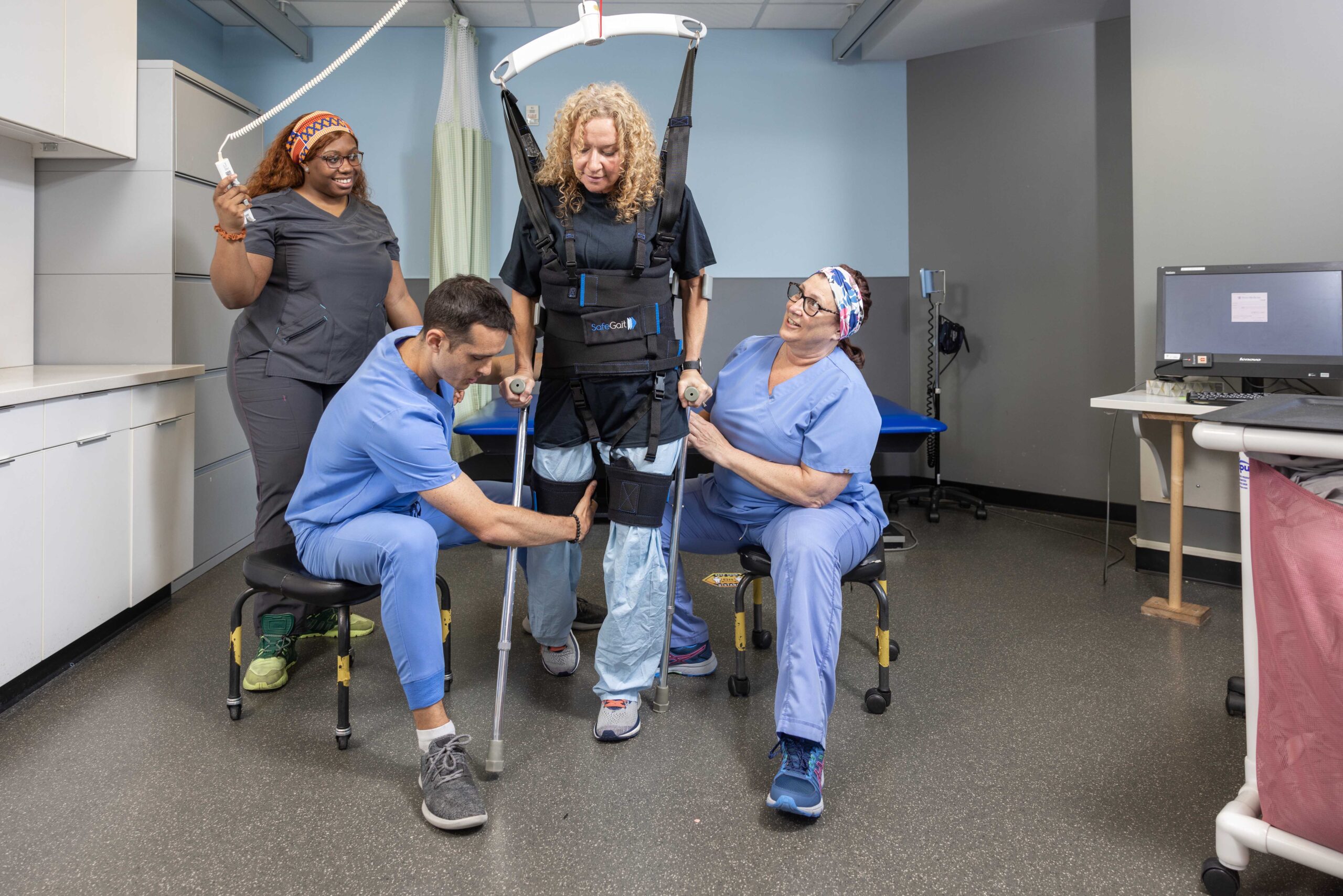It’s a fact: People who participate in a stroke rehabilitation program have better outcomes than those who do not.1 The impact of your stroke is different than anyone else’s, and a personalized program can help restore movement, strength and speech and help you with daily tasks.
It’s important to know that stroke recovery times vary widely. You may find you recover your pre-stroke abilities quickly, while other people need rehabilitation for a longer period. Generally, the more severe a stroke, the longer the rehabilitation.
What to expect from a Stroke Rehabilitation Program
Stroke symptoms like dizziness, facial drooping, slurred speech, weakness and vision difficulty and can last from ten minutes to hours. Symptoms that come and go may be a sign of a type of stroke called a TIA (Transient Ischemic Attack).
Any stroke is an emergency and requires immediate medical attention by calling 911. The hospital will run tests to determine the type of stroke and how much damage occurred. Some strokes are treated immediately with medicine to dissolve a blood clot or surgery to repair blood vessels or remove fluid, clots or extra blood from the brain.
Stroke rehabilitation will begin quickly once you are medically stable – usually within 24 to 48 hours. The sooner rehab starts, the more likely you will regain your pre-stroke abilities.
Your stroke therapy sessions may be challenging at first, but they are critical to a successful recovery. Therapy will continue during your hospital stay, and your therapists and physicians will evaluate the impact of your stroke and decide where to focus your rehabilitation program.
Your hospital discharge plan will likely include information on inpatient and/or outpatient therapy you need. Your program may include physical, occupational and speech & language therapy.
The first three months after your stroke
Intense rehabilitation during the first three months is critical and the primary time for progress and recovery. Your goal during this time is to restore as much pre-stroke function as possible and learn strategies to help you cope with any challenges.
Rehabilitation will help the brain compensate for the damaged areas and rewire itself to perform lost tasks and skills. The phenomenon called “spontaneous recovery” may occur when an ability suddenly returns to its pre-stroke level.
Months 4 to 12 post-stroke
Your rehabilitation should continue for at least six months to regain as much recovery as possible. Some patients may fully recover and others will need continuing therapy. After six months, 35 to 40 percent of stroke survivors still have limitations with basic activities.2
Your progress depends on the severity of your stroke, the areas of the brain that are damaged, how quickly rehabilitation started and its intensity.
One year after your stroke
It’s important to continue your therapy as recommended by your care team, because research shows that even a year after your stroke, your brain is still capable of learning and you’ll continue to recover.3 Making incremental gains in fine movement, skills and abilities will contribute to your independence and quality of life.
If you or a loved one is in need of inpatient stroke rehabilitation, visit our stroke rehabilitation page or call 877-969-7342.
[1] Mayo Clinic: Stroke rehabilitation: What to expect as you recover
[2] American Stroke Association: Rehab Therapy After a Stroke
[3] Journal of Neurophysiology: A critical time window for recovery extends beyond one-year post-stroke

